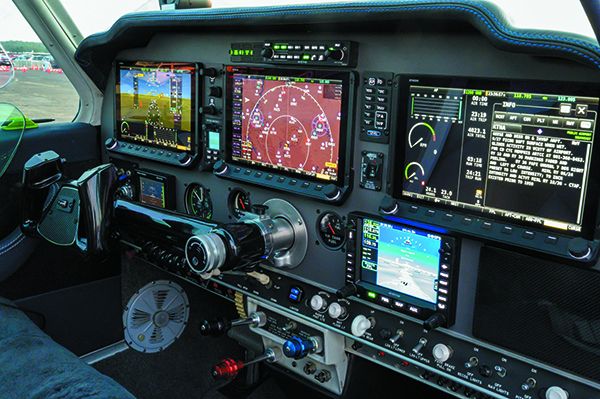It’s a question we field often: My eyes are aging and I need a big display. Do I buy a Garmin or a Dynon? As one reader put it: “I got demos for each system while at AirVenture and walked away more confused than when I started.”
Part of the confusion was prompted by the autopilot upgrade, because Dynon’s SkyView HDX Certified suite was approved for his airplane, but the Dynon autopilot was not. It sent him to Garmin, where the G3X Touch and G500 autopilot were approved.
While Dynon’s SkyView HDX has matured nicely since it earned the initial STC a couple of years ago, its embedded autopilot isn’t available for as many airframes as Garmin’s GFC 500 autopilot. This is but one of many considerations that tags along in the purchase decision, and we’re here to help sort it out.
Since we’ve covered the feature set for both the Garmin and Dynon products in previous flight trial reports, we’ll concentrate on the big-screen flight display decision-making process, the interface potential and planning for failsafe backup. The goal is to arm you with the knowledge you need to deal with a shop for a quote.
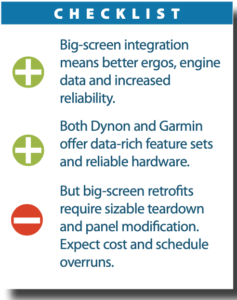
AUTOPILOTS, APPROVALS
The first step in venturing on a big-screen glass upgrade is determining which systems are approved. This is usually via an AML-STC (Approved Model List Supplemental Type Certificate), where the system has a blanket approval for installation in a variety of aircraft models.
At last count, both Garmin’s G3X Touch and Dynon’s SkyView HDX Certified (Dynon makes the HDX for both experimental and certified aircraft) were approved for over 500 aircraft. Unless you have an oddball airframe, there’s a good chance either system will legally be a player. But the autopilot interface for either system can kill the deal.
While Dynon’s SkyView has an extensive AML-STC, not all of them include the Dynon embedded autopilot. As an example, nearly all of the Cessna 172 models on the AML include the autopilot, but the autopilot isn’t approved for Cessna 182 models. At press time, Dynon was working on it, and an autopilot interface for some serial numbers in the Beech Bonanza model line. Dynon has an STC for the autopilot (and the SkyView) for Piper Seneca twins, except the Seneca I, which isn’t approved for the autopilot.
Over at Garmin, the GFC 500 autopilot system has an STC that’s outside of the STC for the G3X Touch. That means just because the G3X Touch is approved for your aircraft, it doesn’t mean the autopilot is, too. But it’s approved in big numbers—196 models. Eyeballing the AML, we found a healthy selection of Cessna, Beech, Mooney, Grumman, Aviat and even some Cirrus SR22 models. Moreover, Garmin has been adding to its approval list quickly. At press time, it was working on a long list of future approvals for the coming year. It has always been important, but now more than ever you need to bring the airplane to the shop so they can verify its serial number and any modifications (that’s important) to make sure it’s blanketed under the equipment’s STC.
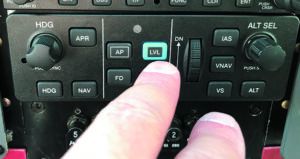
Autopilot interfaces (or lack of) can be a deal breaker because the big-screen installation is the most opportune time to do the install. The airframe is opened up, the wiring harnesses are being built and face it, a flagship integrated avionics suite could be shortchanged with a vintage, analog autopilot. Moreover, the G3X Touch and the Dynon SkyView HDX won’t support third-party autopilots. But Garmin’s 10.6-inch G500 TXi retrofit flight display will, when equipped with an autopilot adapter. More on that later.
HOW MANY SCREENS?
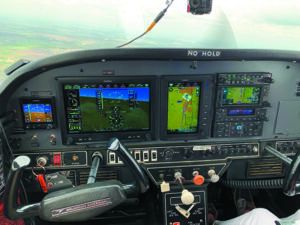
The Garmin G3X Touch and Dynon SkyView HDX are available in different screen configurations and sizes. Since our focus here is big-screen retrofits (we’ll look at small-screen projects in a separate article), your shop will be loading 10-inch displays in the panel, and that’s not a slap-and-go job. We dove deep into panel fabrication in in the “Panel Planning 101” article in the April 2021 issue of Aviation Consumer, and it’s worth a read to see what’s involved. With a big-screen upgrade you’ll be dealing with a sizable teardown, choosing a layout, metal fabrication, paint work, placards, panel lighting and potentially rebuilding the circuit breaker panel and electrical bus.
Garmin’s G3X Touch flagship combination includes a 10.6-inch color touchscreen display, and there is also an option for an additional 7-inch display for the EIS (engine instrument system). You can also get dual 10.6-inch landscape displays. There are plenty of supporting components, including the GSU 25D ADAHRS, GMU 11 magnetometer and the GTP 59 temperature probe. And as you would expect, the STC is written to give the green light for removing the aircraft’s vacuum system. The G5 instrument is the most common backup.
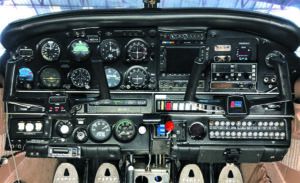
With the optional Garmin EIS, in most cases you can also remove the original engine and fuel gauges. You can display the engine data on the primary (and secondary) display, depending on the configuration you choose. Garmin’s EIS installation kits pretty much include everything an installer will need to replace the factory gauges, although there’s bound to be the need for some extra install supplies, including fuel lines and such. You know, those unexpected line items buried in the middle of the multipage invoice. Also, be prepared to spend some money either overhauling or replacing aging fuel quantity sensors during the installation. The accuracy of the system greatly depends on the condition of the sensors in the fuel tanks, and many have seen better days.
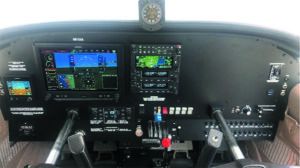
Dynon’s SkyView HDX Certified system starts with a 7-inch display, but its big-screen suite includes the 10-inch landscape-configured touchscreen. Depending on the aircraft and the STC, you can get a second (or third) 10-inch screen and a 7-inch secondary screen. The STC requires backup instruments, and the D10A electronic AI with airspeed and altitude data serves as such.
Dynon’s engine monitoring system comes from the EMS-220 module and like Garmin’s EIS, is available for a variety of four- and six-cylinder engines. It includes fuel quantity and everything you’d expect from a modern engine display. The data is displayed on the main SkyView screen and is quite configurable.
Unlike Garmin’s G3X Touch, which uses a CAN bus for main system interconnection, Dynon’s SkyView displays connect to external modules over the dual-redundant SkyView network/hub. Dynon manufactures these network cables and provides them as part of the system, while techs installing the Garmin system will fabricate the harnesses. This could be a time-saver—or not. Here’s why.
WHO’S GONNA INSTALL IT?
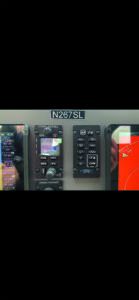
Selecting the shop to perform (and support) the installation is just as important as the equipment you choose. For the G3X Touch Certified, you’ll need to go to an authorized Garmin dealer. Yes, if you have an experimental homebuilt, you can do the installation yourself. But don’t expect to find nearly as many Dynon HDX Certified installers. While the list of dealers has expanded since the product was released a few years ago (there are a total of 39 Dynon Certified Installation Centers in the U.S.), the majority of installations are accomplished by A&P mechanics with IA credentials.
The way it works is you buy the equipment, nominate an IA (or a maintenance shop) to do the installation (preferably one that’s successfully installed modern avionics, including Dynon equipment) and Dynon verifies that the individual’s certificate is valid. If it approves, the mechanic becomes part of the system’s STC. This has been a departure from the norm of installing avionics, as most avionics installers work under an FAA Repair Station certificate.
This installation decision is perhaps the most important part of your planning, and it might attract or deter you from one system over another. From our experience following multiple SkyView projects, the install could take longer in the hands of an A&P/IA than at an experienced avionics shop because face it, a mechanic installing a Dynon for the first or even second time will inevitably deal with a learning curve. On the other hand, Dynon has learned a lot over the past couple of years and has streamlined and improved upon its installation kits to help mechanics kick these installations out of the hangar more efficiently. You’ll see more improvements, including prefab brackets and mounting hardware to make for an easier install. Remember, Dynon has always catered to amateur builders, and it’s using the experience with the Certified HDX. Garmin says its G3X Touch, which came from the experimental world, was designed for an easier install that an experienced avionics shop can easily handle.
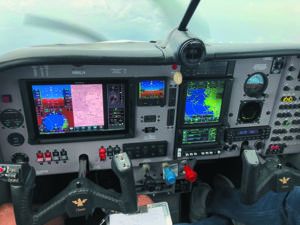
With big-screen retrofit glass, the planning isn’t over when you decide on the main system. Now it’s time to plan on the placement of backup instruments, and big-screen glass offers a good opportunity for the better placement of backup instruments. Since your installer will be cutting a new panel, think about the layout carefully. The backup instrument (Garmin G5 or Dynon D10A) should be placed directly next to the primary display, preferably to the right so it’s visible from the copilot’s position. But also think in terms of training, and learning to fly partial panel. You really need to think it through.
Fully understand what you are getting. A friend with a Mooney Bravo and a Garmin G500 big-screen PFD/MFD had the three round gauges as backup but the mechanical, vacuum-powered AI failed. Instead of replacing it with a similar instrument, he decided to go for a Garmin G5. To be clear, there was no misrepresentation by the avionics shop. The G5 was installed strictly to provide airplane control. That means that instead of magnetic heading, it showed magnetic course. Since the G500 had a magnetometer, I wondered why not also connect it to the G5? That’s not possible because the Garmin magnetometer used in the G500 is not compatible with the G5. A different magnetometer for the G5 is required. Additionally, the G5 can show navigation guidance, but that requires connectivity with a compatible external nav. That’s just but one example of issues that are not obvious when making the decision on backup instruments.
Back to placement. Start by looking where aircraft manufacturers are installing backup instruments in glass-panel models. Consider a Garmin G1000 Mooney Ovation. The three round-gauge instruments are located way to the right in the panel. This arrangement is an excellent way to induce vertigo through excessive head movement. Some Beech piston airplanes have the same arrangement. If the pilot is flying solo during the failure, he should consider moving over to the right seat. Cessna, on the other hand, mounts the backup instruments in the middle of the panel right above the engine controls. That’s a bit better, but you must look down and right. In most Cirrus models, the backups are placed in the subpanel, above the pilot’s knees. That’s not great, either.
Last, don’t underestimate the amount of practice that’s needed with the new setup. Thankfully a single backup EFIS makes it a lot easier to fly partial panel, but only if it’s placed in the right spot on the new panel.
—Luca Bencini
DON’T BUY ON SPECULATION
Both Dynon and Garmin attest that a huge draw to a flagship big-screen upgrade is the opportunity to install a new autopilot. If your airplane isn’t approved for Dynon’s or Garmin’s autopilot, have patience. From a regulatory standpoint, autopilots are one of the most time-consuming and challenging systems. In our estimation, this won’t get easier. Dynon’s Michael Schofield had solid advice, advising not to buy a system with the expectation that an approval for your exact model aircraft will be approved. Wait until it is approved.
In the end, if an autopilot interface is a deal breaker, you might nix the idea of going with a SkyView or G3X Touch in favor of Garmin’s TSO’d G500 TXi. This is the current retrofit big-screen PFD/MFD combination that replaced the popular G500 a few years ago. If you are happy with your existing autopilot, the G500 TXi can likely work with it (and other third-party systems) when connected to Garmin’s GAD 43 analog/digital autopilot adapter.
Last, when shopping for a G3X Touch and SkyView HDX, consider the radio stack. For IFR flying, you’ll need an external IFR GPS navigator. Dynon’s HDX works with both Garmin and Avidyne GPS systems, while the G3X Touch is limited to Garmin’s current models. Don’t forget ADS-B, either.
As you’ll see when you get accurate proposals, these systems will substantially add to the bottom line. When all is said and done, the total investment of a typical big-screen retrofit could reach $50,000 or more.
Garmin (www.garmin.com) and Dynon (www.dynoncertified.com) provide current STC approval status on their websites.

